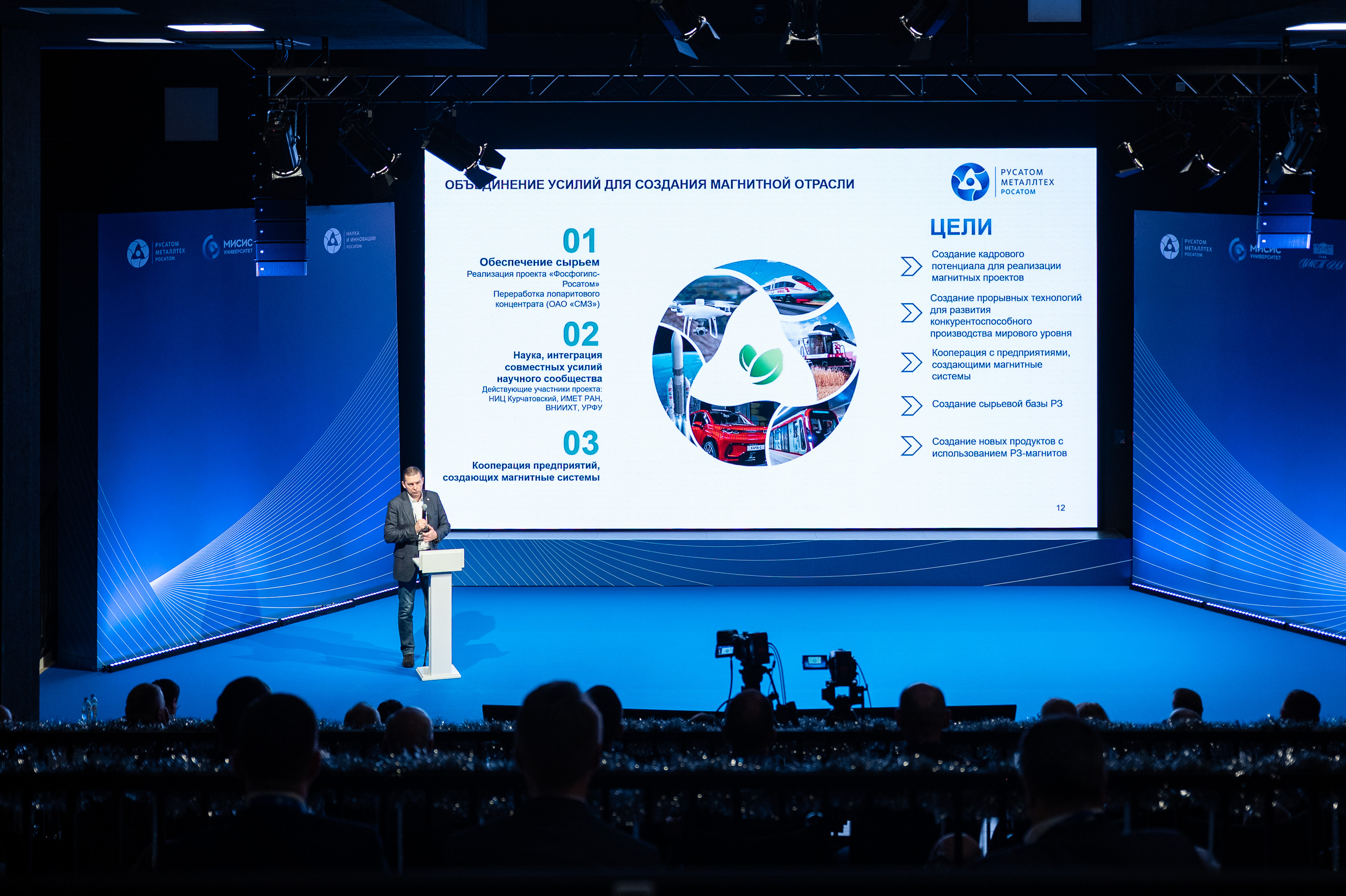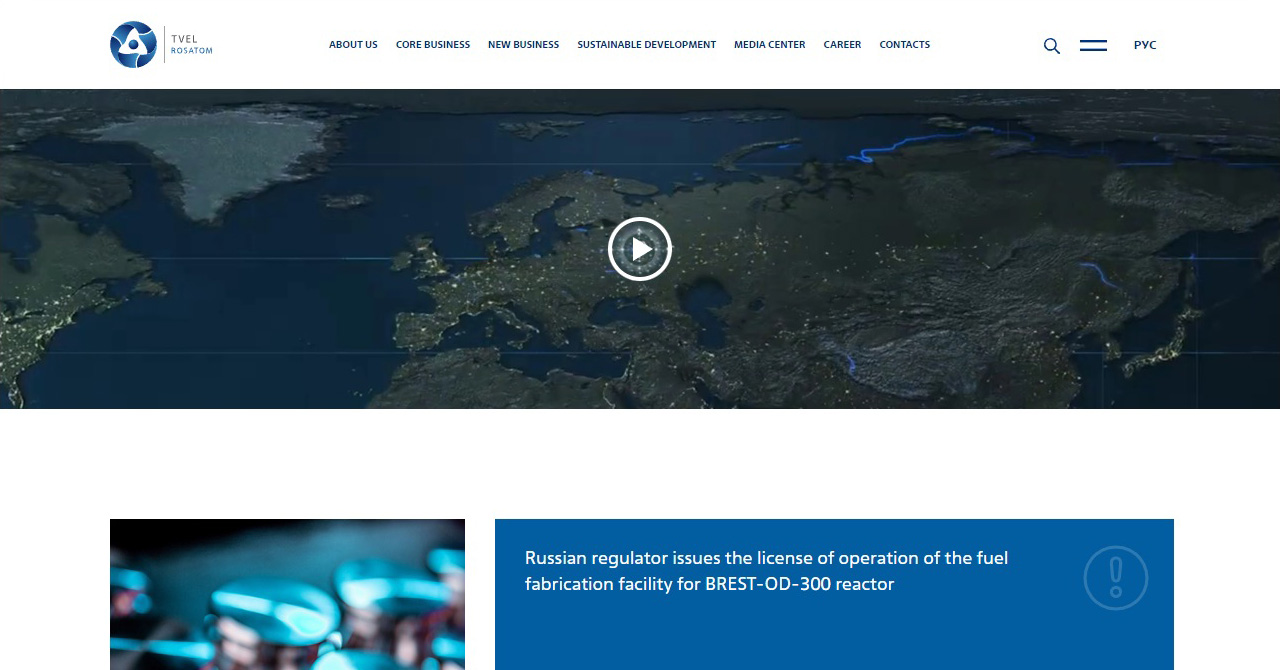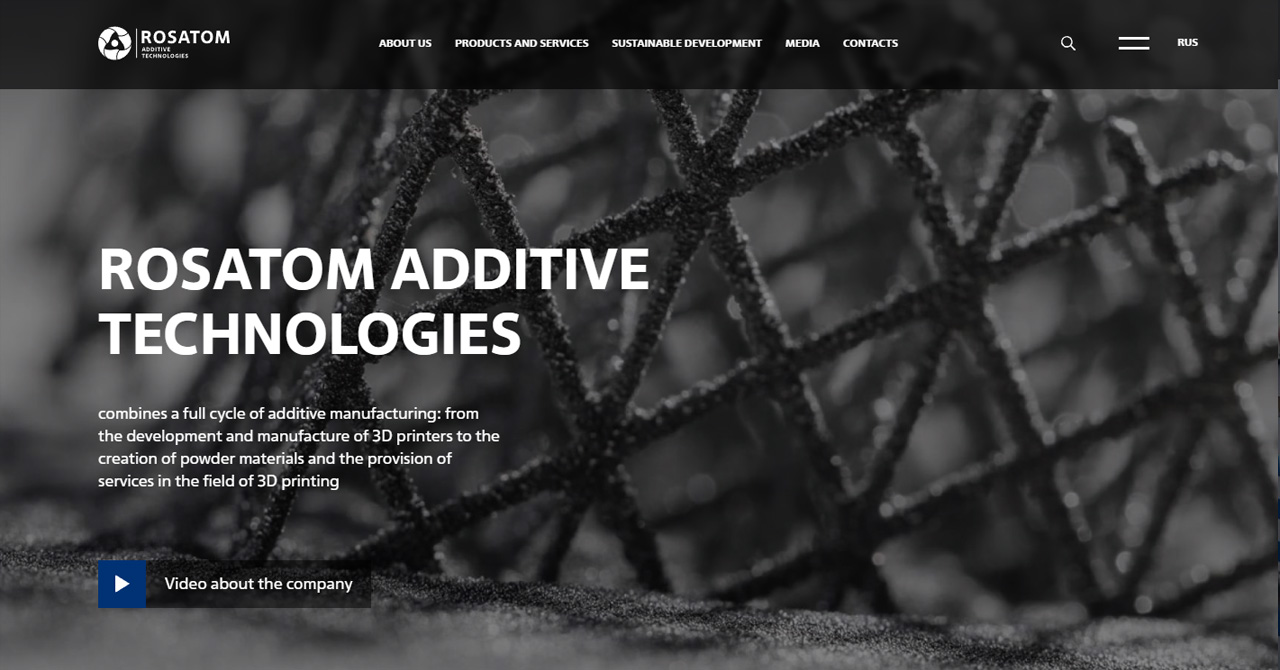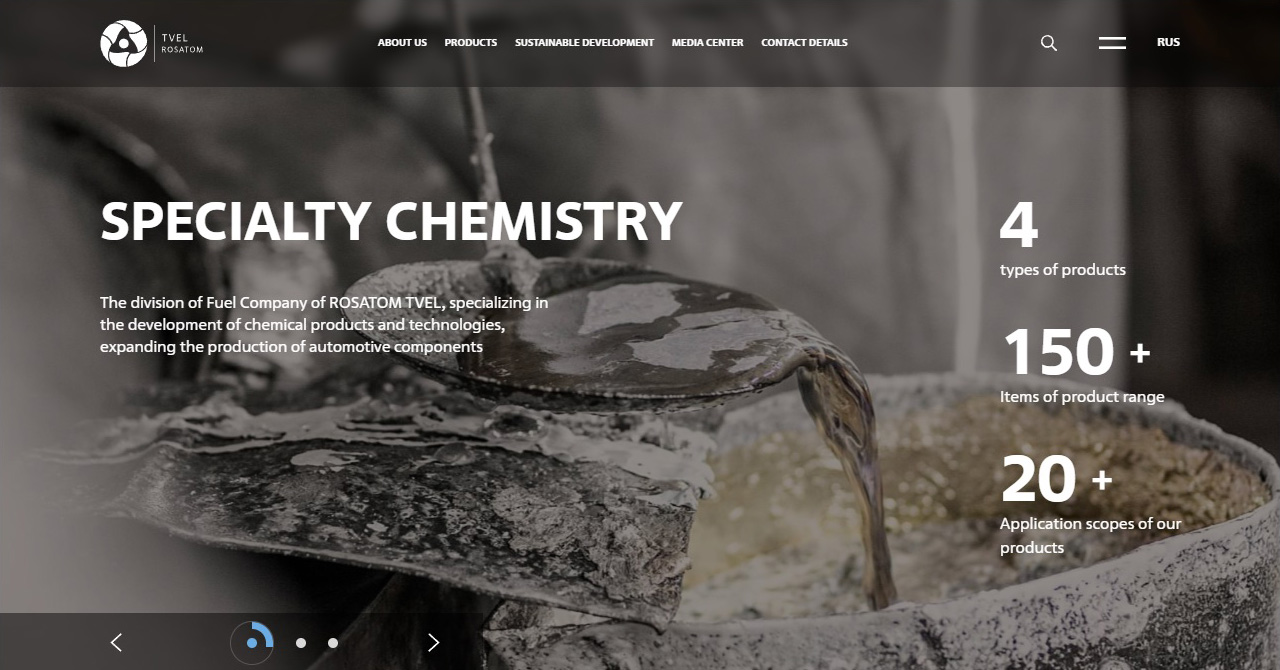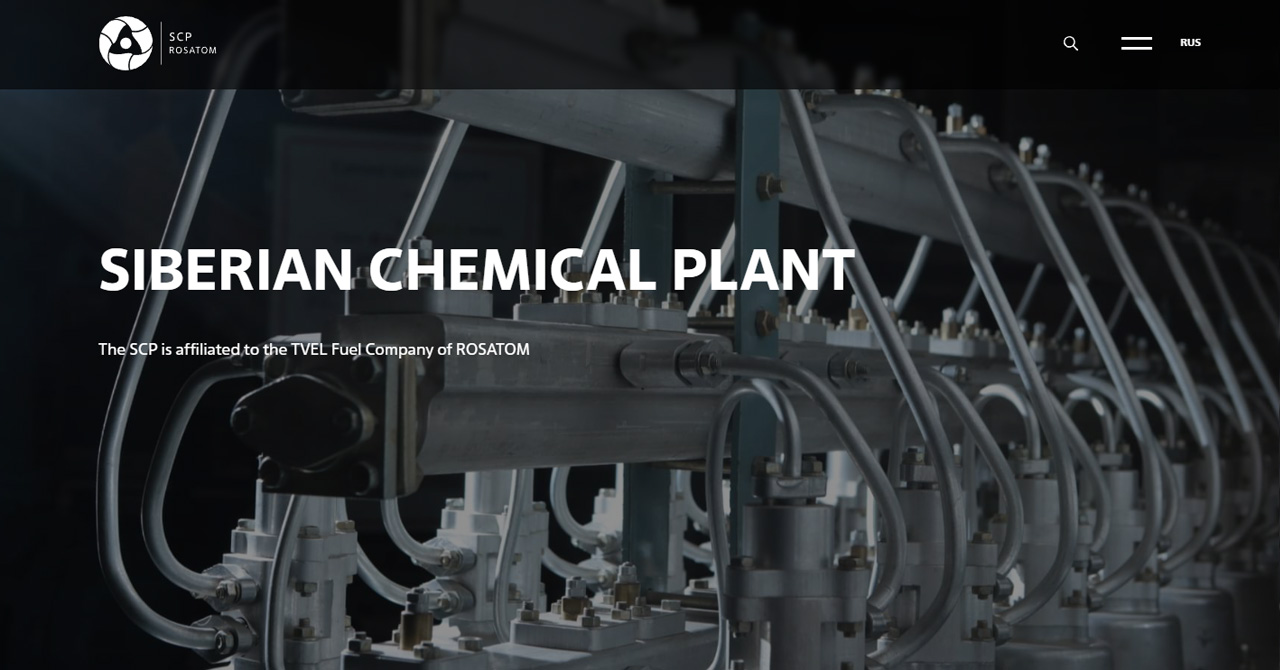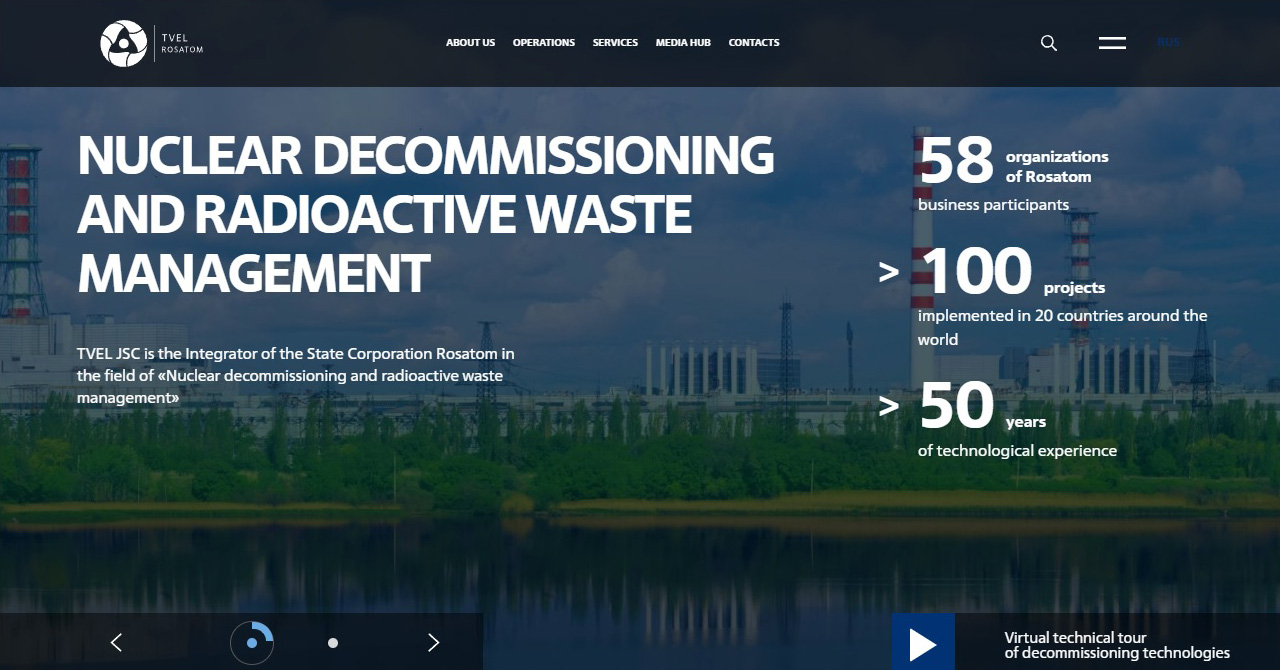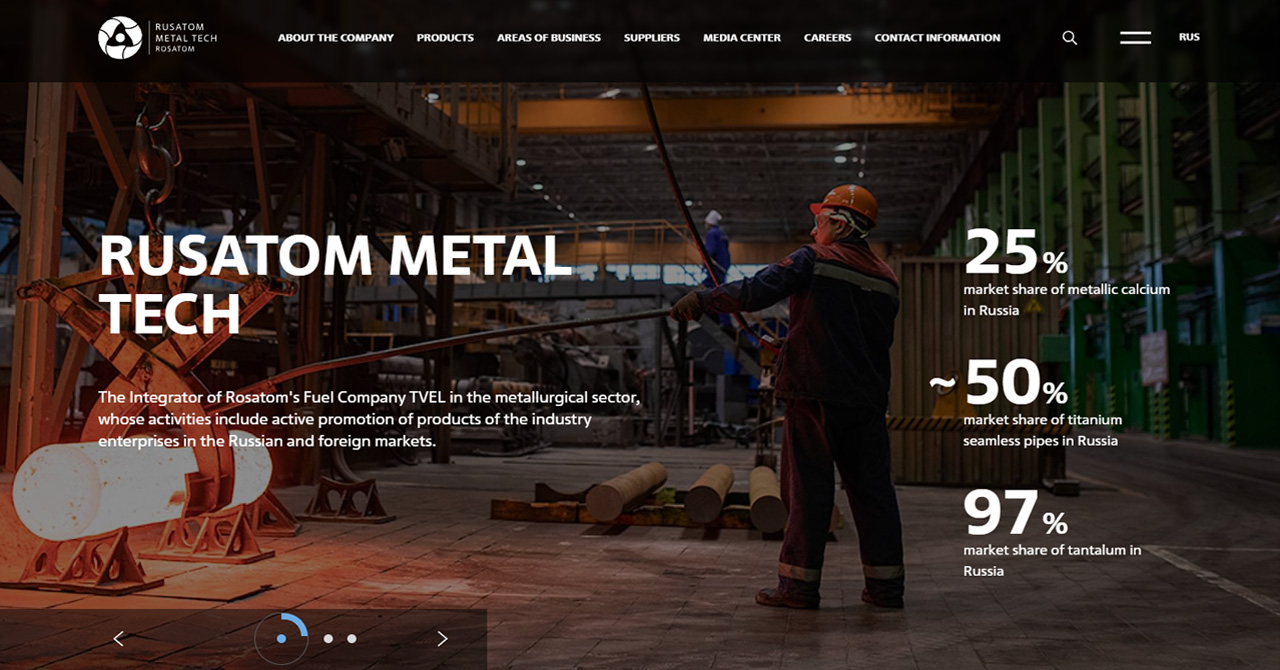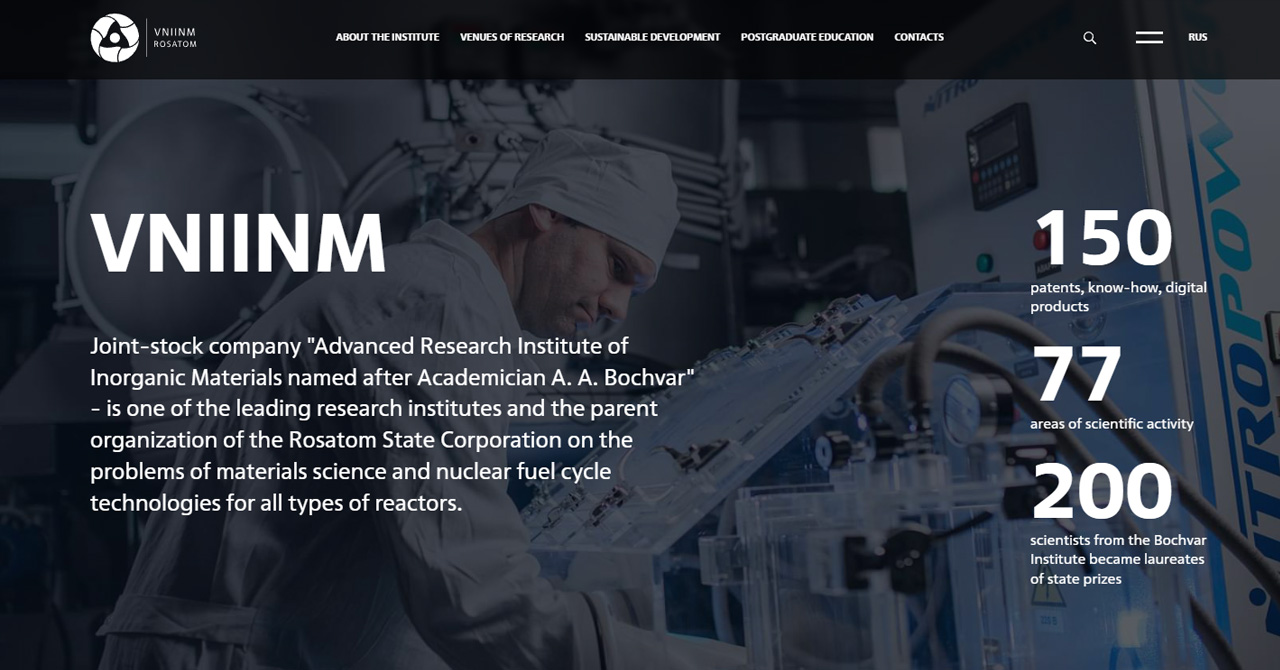The All-Russian strategic session "Permanent Magnets: Technologies. Production. Application"
was held at the site of the MISIS University of Science and Technology in Moscow. The event
was organized by Rusatom Metal Tech LLC (an integrator of the TVEL Fuel Company of
Rosatom in the Metallurgy direction) with the participation of the A.A. Baikov Institute of
Metallurgy and Materials Science of the Russian Academy of Sciences (IMMS RAS), NUST
MISIS and Science and Innovation JSC.
The event was attended by about 100 leading Russian specialists representing fundamental and
academic science, the manufacturing sector, government authorities, as well as consumers of
magnetic products. They discussed the existing opportunities and necessary steps to create a
complete production chain of permanent magnets based on rare-earth alloys in Russia from the
extraction of raw materials to the manufacture of magnets with high consumer characteristics.
It was noted that currently there are practically no full-cycle production facilities in Russia that
allow obtaining magnetic products using Russian raw materials. However, all the necessary
resources are available to create such a production chain of REM magnets. In particular,
Rosatom State Corporation has competencies in all key areas, including: extraction of raw
materials (projects of the ARMZ Mining Division); research base (Science and Innovation JSC);
as well as existing and future production facilities of the Fuel Division. Additionally, the stability
of the vertical chain is ensured by cooperation with the leaders of the rare metal industry, in
particular, the Solikamsk Magnesium Plant.
"Technological sovereignty is not only and not so much the presence of imported machines in
the country for the manufacture of products, but control of the entire production chain from the
extraction of raw materials to the manufacture of the final product, as well as the entire chain,
from scientific development to industrial production. In this logic, the strategic documents
signed between Rosatom and the Russian Government, including the agreement on the
Technology of New Materials and Substances, are being implemented. Within this area, REM
magnets are the most important element in the "Rare and rare-earth metals" track, which acts as a
link between mining operations and manufacturers of high-tech products. The growth in demand
for magnets can become the most important driver for the recovery of the Russian rare-earth
metals industry," Dmitry Ivanets, Deputy Director for Technological Development of Rosatom
State Corporation, stressed in his speech.
Andrey Andrianov, General Director of Rusatom Metal Tech LLC, noted that according to
estimates of the Russian market, the demand for rare-earth magnets should triple from 2021 to
2030, from 1,045 tons to 3,400 tons. The key drivers are the growth of installed wind generation
capacity (the projected volume is 6-7 GW by 2035), as well as the production of Russian electric
vehicles. A strategic Russian project in the field of REM magnets is the creation of a large-scale
production of permanent magnets in the city of Glazov of the Udmurt Republic by Rosatom.
"The goal of the project is to create a production of rare-earth magnets of the neodymium-iron-
boron system with a capacity of 1,000 tons by 2028, but this volume is not final for us, and we
believe that this is only the first step. Next we plan to expand production to 3,000 tons by 2030.
This high-tech production based on domestic raw materials will allow us to almost completely
meet the needs of key Russian industries in these products," he said.
"Scientific research at Rosatom is aimed at creating magnets with the replacement of scarce rare-
earth metals such as neodymium and praseodymium with more affordable and cheaper
lanthanum and cerium, obtaining magnets of complex shape with variable gradient properties
using 3D printing, as well as developing a technology for recycling waste magnetic materials.
Cooperation has been established between Rosatom, IMMS RAS and UrFU. We have already
moved from scientific experiments to specific applied results in record time. In just two years,
we have obtained results that allow us to move to the creation of production facilities based on
Russian technologies,"said Alexey Dub, First Deputy General Director of Science and
Innovation JSC.
Representatives of the Metallurgy and Materials Department of the Ministry of Industry and
Trade of Russia, the Government of the Udmurt Republic, NovaWind JSC, AmperMagnit LLC,
Ural Federal University named after the first President of Russia B.N. Yeltsin and other
organizations also took part in the event and made their presentations.
One of the key outcomes of the event was the signing of a memorandum between Rusatom
Metal Tech LLC, NUST MISIS, IMMS RAS and Science and Innovation JSC on organizing the
International Conference :"Permanent Magnets: Technologies. Production. Application" for the
exchange of experience between Russian and foreign experts on the production of permanent
rare-earth magnets. It is scheduled for September 2024.
Reference
Permanent magnets are essential for wind power plants, electric transport, robotics and other
high-tech electrical devices. Since 2020, Rosatom has been engaged in phased localisation of
production of permanent rare-earth magnets of the neodymium-iron-boron system in the Fuel
Division. The first REM magnets produced by Elemash Magnet LLC (part of Rosatoms Fuel
Company TVEL) were supplied to Rosatoms wind power division, JSC NovaWind, for power
generators at the Karmalinovskaya Wind Power Plant in Stavropolsky Krai. Russian industry
faces the goal of ensuring technological sovereignty and transition to the latest technologies as
soon as possible. The state and large domestic companies are channelling resources to
accelerate the development of the domestic research, infrastructure, scientific and technological
base. The introduction of innovations and new high-tech equipment allows Rosatom and its
enterprises to occupy new niches in the market, increasing the competitiveness of the nuclear
industry and the Russian industry as a whole.


